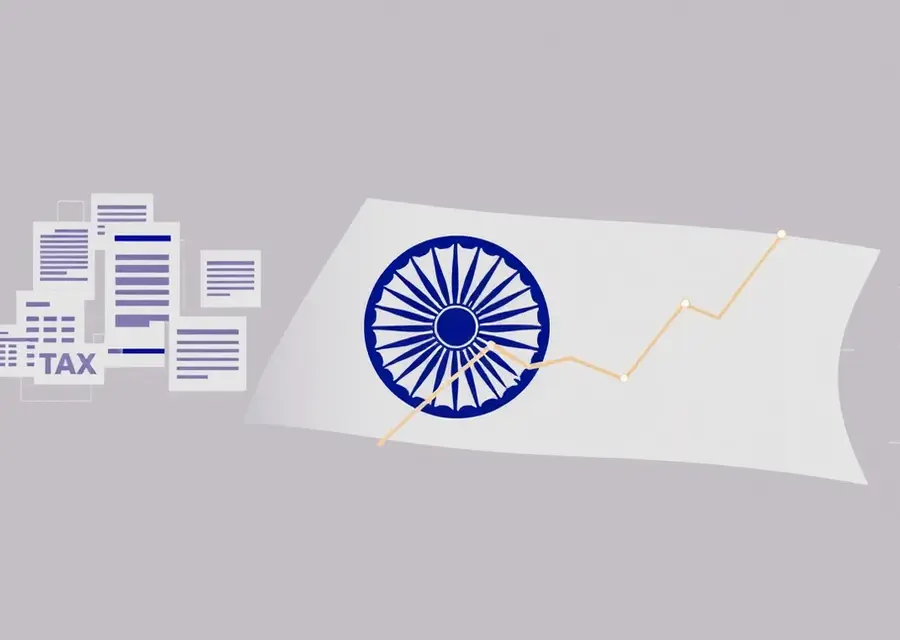Navigating the GST 2.0 Overhaul: What Businesses Need to Know
- THE MAG POST

- Sep 5
- 5 min read

The impending overhaul of India's Goods and Services Tax (GST) framework, often referred to as GST 2.0, represents a pivotal moment for the nation's indirect taxation system. This significant reform, driven by the Central Board of Indirect Taxes and Customs (CBIC), aims to simplify tax structures, enhance compliance, and stimulate economic activity. While the long-term benefits are anticipated to be substantial, the transition period is expected to present its own set of challenges. The CBIC has candidly acknowledged that an initial, temporary decline in GST collections is a realistic possibility as businesses adjust to the new regime and utilize accumulated input tax credits. However, this anticipated dip is viewed as a short-term phenomenon, with expectations that robust consumer demand, particularly during festive seasons, will significantly boost sales and consequently, tax revenues. The focus remains on ensuring a smooth, coordinated transition, leveraging technology and industry collaboration to navigate this evolving fiscal landscape.
The Dawn of a Streamlined GST 2.0: Navigating the Initial Transition
The landscape of indirect taxation in India is on the cusp of a significant transformation with the impending overhaul of the Goods and Services Tax (GST) framework, dubbed GST 2.0. This monumental shift, spearheaded by the Central Board of Indirect Taxes and Customs (CBIC), promises a more rationalized and potentially growth-inducing tax structure. However, as with any large-scale systemic change, the initial phase is expected to present unique challenges and require careful navigation. The CBIC acknowledges that a temporary dip in GST collections is a foreseeable outcome in the months immediately following the implementation. This dip is primarily attributed to businesses leveraging their accumulated Input Tax Credit (ITC) to meet their tax liabilities, a natural consequence of the transition period. Yet, the anticipation is that robust festive season demand will act as a powerful counter-balance, stimulating sales and consequently bolstering tax revenues in the subsequent periods.
Harmonizing Systems: The Crucial Role of IT Upgrades
The success of GST 2.0 hinges critically on the seamless integration and operation of IT systems across the nation. The CBIC is proactively engaging with a wide spectrum of industry stakeholders, recognizing that a collaborative approach is paramount for a glitch-free rollout. This coordination involves extensive efforts to upgrade and align existing software and backend systems to perfectly match the intricacies of the new tax structure. The objective is to ensure that businesses can operate without interruption, minimizing any potential disruptions that could arise from technological incompatibilities. This meticulous preparation underscores the department's commitment to facilitating a smooth transition, ensuring that the revamped tax regime functions efficiently from day one.
Decoding the New Tax Architecture: Slabs and Rates
At the heart of the GST 2.0 reform lies a significant simplification of the tax slab structure. The previous multi-tiered system is being condensed into two primary rates: a 5% slab for essential goods and services, and an 18% slab for a broader category of items. This consolidation is designed to reduce complexity and improve taxpayer compliance. Furthermore, a specialized 40% rate has been introduced for premium and demerit goods, such as luxury vehicles, tobacco products, and aerated beverages, often referred to as "sin goods." This approach aims to balance revenue generation with the objective of discouraging consumption of certain items. The elimination of additional levies above this 40% threshold is expected to provide substantial relief to consumers of mid-size and large cars, potentially making these vehicles more accessible.
Economic Ramifications: Revenue, Inflation, and Consumption
The financial implications of GST 2.0 are multifaceted, with the government projecting a revenue adjustment of approximately Rs 48,000 crore due to the tax rate modifications. While this figure is considerably lower than some independent economic forecasts, which ranged up to Rs 1 lakh crore, the Centre anticipates that the tax rationalization will serve as a potent catalyst for economic growth. By reducing the tax burden on numerous goods and services, the reform is expected to stimulate consumer spending and concurrently exert downward pressure on inflation. Analysts from institutions like Citi have projected a notable decrease in retail inflation, potentially by as much as 1.1 percentage points, provided the full benefits of the rate cuts are effectively passed on to the end consumers. This economic stimulus is a key objective underpinning the entire reform initiative.
Enhanced Compliance and Sector-Specific Adjustments
Beyond rate rationalization, GST 2.0 introduces significant enhancements in compliance mechanisms, particularly targeting sectors prone to tax evasion. The tobacco industry, for instance, will witness a pivotal shift in valuation methodology, moving from the traditional transaction value to the retail sale price (RSP). This change is designed to create a more transparent and accountable tax environment. While the majority of consumer goods are slated to benefit from reduced tax liabilities, certain categories are set to experience an increase. Notably, apparel priced above Rs 2,500 and coal will face higher GST rates under the new regime. These targeted adjustments reflect a strategic effort to balance the overall revenue implications while ensuring fairness and promoting compliance across diverse economic sectors.
Forward Outlook: Embracing the Evolved Tax Structure
The successful implementation of GST 2.0, with its simplified slabs and enhanced compliance measures, holds the promise of a more efficient and equitable indirect tax system for India. The CBIC's proactive engagement with industry and its focus on IT system upgrades are commendable steps towards mitigating transition risks. While the initial months may present a temporary dip in collections, the long-term outlook appears positive, driven by anticipated boosts in consumption and potentially lower inflation. The strategic adjustments, though impacting specific sectors, are aimed at creating a sustainable and growth-oriented tax framework. Businesses are granted a crucial two-week window to adapt their systems, a period that is vital for a smooth and disruption-free launch of this evolved tax structure, paving the way for a more streamlined economic future.
Aspect of GST 2.0 | Details and Implications |
Transition Period Impact | Temporary decline in GST collections anticipated in initial months due to utilization of accumulated Input Tax Credit (ITC). Festive demand expected to boost sales and revenues later. |
IT System Upgrades | Close coordination between CBIC and industry stakeholders to upgrade software and backend systems for a smooth, glitch-free rollout. |
Tax Slab Simplification | Consolidation from multiple tiers to two main slabs: 5% and 18%. A special 40% rate for 'sin' and high-end goods (e.g., cigarettes, luxury cars). Additional levies above 40% scrapped. |
Estimated Revenue Impact | Government estimate of around Rs 48,000 crore revenue loss. Expected to stimulate consumption and ease inflationary pressures. |
Inflationary Effects | Potential decrease in retail inflation by up to 1.1 percentage points if rate cuts are passed on to consumers (Citi forecast). |
Compliance Enhancements | Tighter compliance, especially in sectors like tobacco, shifting valuation from transaction value to retail sale price (RSP). |
Sector-Specific Adjustments | Tax hikes on certain categories like apparel above Rs 2,500 and coal. Most consumer goods benefit from lower rates. |
Business Adjustment Window | A two-week window provided for businesses to adjust their back-end systems before the new regime's effective date. |













































Comments